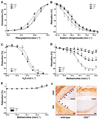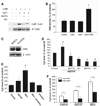H2S as a physiologic vasorelaxant: hypertension in mice with deletion of cystathionine gamma-lyase
- PMID: 18948540
- PMCID: PMC2749494
- DOI: 10.1126/science.1162667
H2S as a physiologic vasorelaxant: hypertension in mice with deletion of cystathionine gamma-lyase
Abstract
Studies of nitric oxide over the past two decades have highlighted the fundamental importance of gaseous signaling molecules in biology and medicine. The physiological role of other gases such as carbon monoxide and hydrogen sulfide (H2S) is now receiving increasing attention. Here we show that H2S is physiologically generated by cystathionine gamma-lyase (CSE) and that genetic deletion of this enzyme in mice markedly reduces H2S levels in the serum, heart, aorta, and other tissues. Mutant mice lacking CSE display pronounced hypertension and diminished endothelium-dependent vasorelaxation. CSE is physiologically activated by calcium-calmodulin, which is a mechanism for H2S formation in response to vascular activation. These findings provide direct evidence that H2S is a physiologic vasodilator and regulator of blood pressure.
Figures



References
Publication types
MeSH terms
Substances
Grants and funding
LinkOut - more resources
Full Text Sources
Other Literature Sources
Medical
Molecular Biology Databases
Miscellaneous

